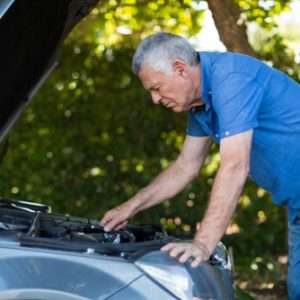That little engine-shaped light on your dashboard. It’s enough to send shivers down any car owner’s spine‚ isn’t it? Seeing that illuminated symbol can instantly trigger a wave of anxiety; What does it mean? Is it something serious? Will it cost me a fortune to fix? Let’s dive into the common reasons why your car’s engine light might be on‚ and what you should do about it.
The dreaded check engine light – it’s not always a sign of impending doom‚ but it definitely warrants investigation. Think of it as your car’s way of saying‚ “Hey‚ something’s not quite right here.” It could be something minor‚ or it could be a symptom of a larger problem. Either way‚ ignoring it isn’t the best strategy. But what triggers this warning signal?
Common Culprits: Reasons Why Your Car Engine Light Is On
So‚ what are the usual suspects when it comes to triggering that pesky light? Here are some of the most frequent offenders:
- Loose Gas Cap: Believe it or not‚ this is a very common cause! A loose or damaged gas cap can cause fuel vapors to escape‚ affecting your car’s emissions and triggering the light.
- Oxygen Sensor Issues: Oxygen sensors monitor the amount of oxygen in your exhaust. If they’re faulty‚ they can throw off the engine’s air-fuel mixture.
- Catalytic Converter Problems: The catalytic converter reduces harmful emissions. If it’s failing‚ it can cause the engine light to illuminate.
- Spark Plug or Ignition Coil Problems: Faulty spark plugs or ignition coils can lead to misfires‚ which can damage your engine and trigger the light.
- Mass Airflow Sensor (MAF) Issues: The MAF sensor measures the amount of air entering the engine. A malfunctioning MAF sensor can disrupt the air-fuel mixture.
Diagnosing the Problem: What to Do When Your Car Engine Light Is On
Okay‚ the light’s on. Now what? Don’t panic! Here’s a step-by-step approach to figuring out what’s going on:
Step 1: Check Your Gas Cap
As mentioned earlier‚ a loose gas cap is a frequent culprit. Tighten it securely and see if the light turns off after a few drives. Sometimes‚ it’s that simple!
Step 2: Observe Your Car’s Performance
Is your car running differently? Are you experiencing any of these symptoms?
- Rough idling
- Reduced fuel economy
- Hesitation when accelerating
- Unusual noises
These clues can help you narrow down the potential causes.
Step 3: Get a Diagnostic Scan
Most auto parts stores offer free diagnostic scans. They’ll plug a code reader into your car’s computer and retrieve the error codes that triggered the light. This will give you a much better idea of what’s going on.
Step 4: Consult a Mechanic
If you’re not comfortable diagnosing or repairing the problem yourself‚ it’s best to take your car to a trusted mechanic. They have the expertise and equipment to accurately diagnose and fix the issue.
Preventative Measures: Keeping Your Car Engine Light Off
The best way to deal with a check engine light is to prevent it from coming on in the first place! Regular maintenance is key. Here are some tips:
- Follow your car’s recommended maintenance schedule.
- Change your oil regularly.
- Replace your air filter as needed.
- Keep your tires properly inflated.
- Address any minor issues promptly.
Regular Maintenance and Your Car Engine Light
Think of regular car maintenance as preventative medicine for your vehicle. Addressing small issues before they escalate can save you a lot of headaches (and money) in the long run; A well-maintained car is a happy car!
Frequently Asked Questions About the Car Engine Light
So‚ the next time that engine light illuminates‚ don’t automatically assume the worst. Take a deep breath‚ follow these steps‚ and get your car checked out. A little bit of proactive care can go a long way in keeping your car running smoothly and avoiding costly repairs. Remember‚ your car is an investment‚ and taking care of it is essential. Ignoring a problem won’t make it disappear; it will likely just make it worse. Drive safely!




